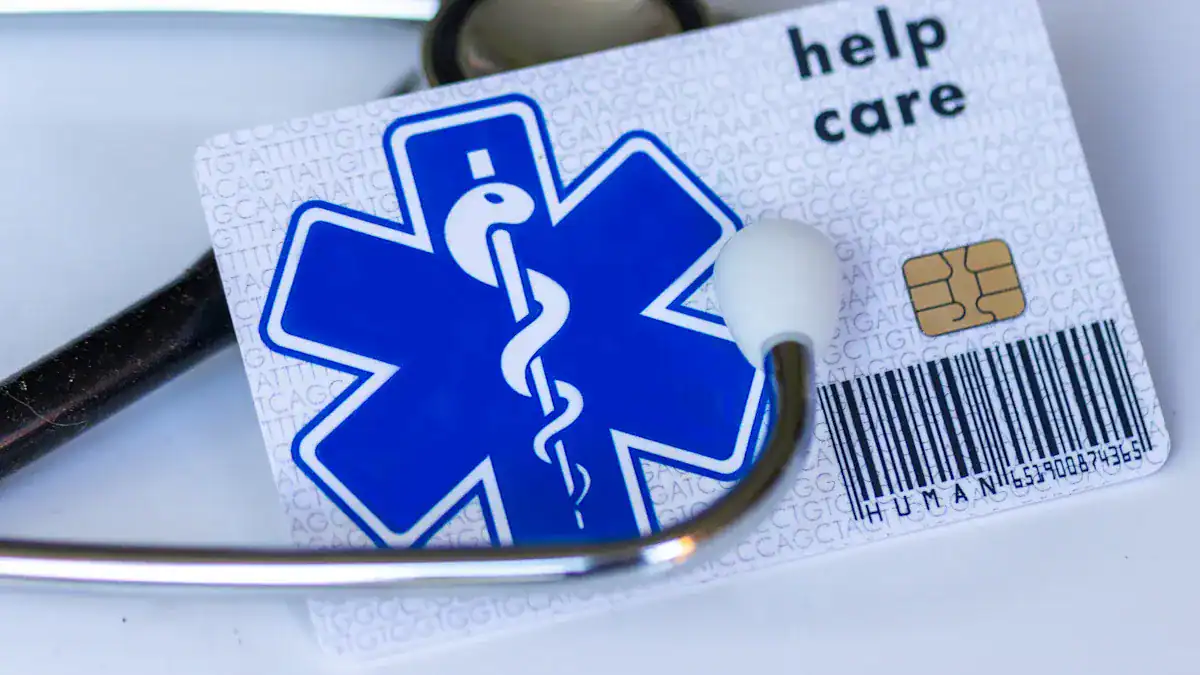
Blood thinners play a vital role in preventing serious conditions like strokes and heart attacks. These medications significantly reduce the risk of thromboembolic events. For instance, the rapid use of blood thinners in the NHS prevented an estimated 17,000 strokes.
While blood thinners offer immense benefits, awareness of their potential effects, including bleeding, is paramount for safe medication management. Knowing these risks helps manage the medication safely.
Key Takeaways
Blood thinners stop blood clots from forming, which helps prevent serious problems like strokes and heart attacks.
The biggest risk of blood thinners is bleeding, which can be minor like nosebleeds or very serious like internal bleeding.
Watch for signs of bleeding such as easy bruising, blood in your pee or poop, or throwing up blood, and tell your doctor right away.
What Are Blood Thinners
Blood thinners are medicines. They help stop blood clots from forming. They also stop existing clots from growing larger. Doctors often call these medicines anticoagulant medications or anticoagulants.
These powerful drugs work in different ways. Some reduce the ability of blood cells to stick together. Others affect proteins in the blood that help form clots. The main goal of blood thinners is to prevent blood clots. This anticoagulant action helps keep blood flowing smoothly.
Why They Are Prescribed
Doctors prescribe blood thinners for many reasons. They help patients avoid serious health problems. These medicines prevent blood clots in people with certain medical conditions. For example, individuals with abnormal heart rhythms, like atrial fibrillation, often receive blood thinners. This condition can cause blood to pool in the heart’s chambers.
This pooling increases the risk of clot formation. Blood thinners help reduce this specific risk. Patients with deep vein thrombosis (DVT) also take these medicines.
Deep vein thrombosis involves a clot forming in a deep vein, usually in the leg. Blood thinners prevent the clot from growing larger. They also stop it from breaking loose and traveling to the lungs. Such an event could cause a pulmonary embolism, a life-threatening condition.
People who have had heart attacks or strokes in the past also benefit greatly. By preventing blood clots in the coronary arteries, blood thinners can significantly lower their risk of experiencing another heart attack or stroke. Other conditions requiring these medicines include lupus, irregular heart rhythms, angina, and coronary artery disease (CAD).
Doctors also prescribe them after certain medical procedures. These include coronary artery bypass, angioplasty, or heart valve surgery. These blood thinners are crucial to prevent blood clots in these vulnerable situations, ensuring patient safety and recovery.
Urgent Bleeding Risks
Blood thinners carry significant urgent risks. The most common and serious side effect of these medications is bleeding. Patients taking blood thinners must understand these risks. This awareness helps them recognize problems quickly.
Recognizing Excessive Bleeding
Patients on anticoagulants often experience excessive bleeding. This bleeding can range from minor to severe. Recognizing the signs of excessive bleeding is crucial. Common indicators include:
Frequent nosebleeds
Bleeding gums
Prolonged bleeding from minor cuts or injuries
Menstrual bleeding that is much heavier than normal
Red or brown urine
Severe bruising
A cut that does not stop bleeding
These signs of bleeding require attention. They show the medication is working strongly. Sometimes, they indicate a need for medical review.
Internal Bleeding Signs
Internal bleeding is a serious concern with blood thinners. It can occur without visible external signs. The risk of bleeding internally is a major worry. Major bleeding happens in about 2%-5% of patients each year. Fatal bleeding occurs in 0.5%-1% per year. Intracranial haemorrhage, a severe form of internal bleeding, affects 0.2%-0.4% of patients annually. Warfarin, a common blood thinner, can cause major bleeding in 10% to 16% of users.
Patients should watch for these signs of internal bleeding:
Dizziness or lightheadedness
Severe weakness
Abdominal pain, especially with swelling
Nausea and vomiting blood or dark, tarry stools
Chest pain
Low blood pressure
Confusion or disorientation
Unexplained bruising, especially around the abdomen
Shortness of breath
Profuse sweating for no clear reason
Changes in mental status, like confusion or loss of consciousness
Specific areas show different effects of internal bleeding. For example, brain bleeding causes severe headaches, weakness on one side, or vision changes. Chest bleeding can cause shortness of breath or coughing up blood.
Abdominal bleeding may show as swelling or pain. Passing blood when you poo is another sign. These are life-threatening conditions that need immediate medical help.
Head Injuries And Bleeding
Head injuries pose a significant risk for people taking blood thinners. Even a minor bump can lead to serious problems. The risk of severe bleeding in the brain is higher for these patients.
Older anticoagulants, like warfarin, carry a significantly higher risk of delayed brain haemorrhage and death after head trauma. This risk increases even more when patients take aspirin with any blood thinner. Newer blood thinners (apixaban, rivaroxaban, dabigatran) have a lower risk than older ones. Taking a novel blood thinner without aspirin significantly reduces this risk.
Patients on anticoagulants should take precautions to prevent head injuries:
Home Safety: Remove tripping hazards like rugs. Install grab bars in bathrooms. Improve home lighting.
Activity Modifications: Avoid contact sports. Wear a helmet when biking. Take time when standing up.
Medical Management: Wear a medical alert bracelet. Keep an updated medication list. Attend regular doctor appointments.
Emergency Preparedness: Know the signs of bleeding. Have emergency contacts ready.
Gastrointestinal Bleeding
Gastrointestinal bleeding is another serious side effect of blood thinners. This occurs when bleeding happens in the digestive tract. Patients taking anticoagulants must monitor their stool. Blood or “tarry” black stool can indicate lower GI bleeding. This is not just a minor side effect.
Common symptoms of gastrointestinal bleeding include:
Black or tarry stool
Dark or bright red blood mixed with stool
Bright red blood in vomit
Vomit that looks like coffee grounds
Cramps or pain in the abdomen
Fainting or feeling lightheaded or dizzy
Feeling tired
Shortness of breath
Other Blood Thinner Risks
Patients taking blood thinners face other urgent risks beyond major bleeding. These include allergic reactions, interactions with other medications, unusual bruising, and gastrointestinal issues. Understanding these effects helps patients manage their health safely.
Allergic Reactions
Hypersensitivity reactions to anticoagulants are uncommon. However, they can affect patient safety and treatment choices.
For example, 19.8% of pregnant women using Heparin experienced such reactions. About 9.9% of non-pregnant women had similar reactions. Nadroparin showed a higher rate, affecting about 65% of users at 100 days.
Patients should watch for signs of an allergic reaction. These signs include:
Skin Reactions: Rashes or hives. These appear as raised, itchy, red patches.
Respiratory Issues: Difficulty breathing, wheezing, and shortness of breath.
Swelling: Rapid swelling of the face, lips, tongue, or throat. Swelling can also affect fingers or lower legs.
Systemic Reactions: Dizziness or fainting, nausea or vomiting, and a fast heart rate.
Unusual Bruising
Unusual bruising is a common side effects of anticoagulants. Patients may notice larger or more frequent bruises than before. These bruises can appear without a clear injury.
This happens because blood thinners make blood less likely to clot. This allows small amounts of bleeding under the skin to spread more easily. While often not a serious side effect, it indicates the medication’s effects. Patients should still report any new or concerning bruising to their doctor.
GI Side Effects
Gastrointestinal (GI) effects are another concern with blood thinners. These include upset stomach, nausea, and diarrhea. These are generally less severe than bleeding in the GI tract. However, they can still cause discomfort.
Doctors manage GI side effects in several ways:
They may choose Direct Oral Anticoagulants (DOACs) with a lower risk of GI bleeding.
They follow guidelines to prevent DOAC buildup, especially in patients with kidney disease.
They consider other medications that might increase bleeding risk.
They avoid medications known to harm the GI tract, such as NSAIDs.
They might prescribe Proton Pump Inhibitors (PPIs) to lower the risk of bleeding.
They test patients with peptic ulcers for Helicobacter pylori and treat it if needed.
For patients experiencing upper GI bleeding, doctors use tools like the Glasgow-Blatchford score. This helps assess the need for treatment. An upper endoscopy helps identify the bleeding source. It also guides treatment and prevents recurrence. Apixaban, a specific DOAC, has shown a significantly lower risk of major and GI bleeding compared to rivaroxaban or dabigatran in some studies. Avoiding aspirin with anticoagulants can also reduce major bleeding events.
When To Seek Urgent Care

Patients taking blood thinners must know when to get help. Recognizing serious symptoms quickly can save a life. Always act fast if you suspect a problem.
Emergency Symptoms
Some symptoms require immediate emergency medical attention. Call 911 right away for serious injuries, even if they seem small. This is especially true if gushing blood occurs, or if damage near an artery is suspected. Blood thinners make these situations more dangerous. They are considered life-threatening conditions.
Other urgent symptoms after an injury include:
A fast heart rate or breathing.
Trouble breathing.
A headache.
Feeling sleepy, faint, or dizzy.
Bruises that become larger or more painful. This can mean internal bleeding.
These signs of bleeding indicate a severe problem. Do not delay seeking help.
Contacting Your Doctor
Some symptoms are not immediate emergencies but still need a doctor’s attention. Contact your doctor if you notice:
Red or black-and-blue marks on the skin that get larger.
A rash.
Itching.
Swelling.
Trouble swallowing.
These symptoms suggest a reaction or a less severe bleeding issue. Your doctor can advise you on the next steps.
Emergency Preparedness
Being prepared helps in an emergency. Patients on blood thinners should carry a medical ID. This ID must include critical information. It should confirm you are on blood thinners, ideally naming the medication.
Also list any serious allergies. Include relevant medical conditions and details of any implanted devices. This information helps emergency responders give you the right care quickly.
Blood thinners are life-saving medications, but they carry significant risks. Patients must maintain continuous vigilance and open communication with healthcare providers. These anticoagulants prevent serious conditions, yet their use demands careful attention.
FAQ
What are the most common side effects of blood thinners?
The most common side effect is bleeding. This can range from minor nosebleeds to severe internal bleeding. Patients may also experience unusual bruising. Gastrointestinal issues like upset stomach or nausea can occur.
What should I do if I experience bleeding while on blood thinners?
Seek immediate medical attention for severe bleeding. This includes gushing blood or signs of internal bleeding. Contact your doctor for less urgent issues like prolonged nosebleeds or new, larger bruises.
How do I know if I have internal bleeding?
Signs of internal bleeding include severe weakness, dizziness, or abdominal pain. Black or tarry stools, vomiting blood, or severe headaches also indicate internal bleeding. Seek emergency care if you notice these symptoms.
What foods should I avoid while taking blood thinners?
Some foods can affect blood thinners. Leafy green vegetables, rich in Vitamin K, can reduce effectiveness. Cranberry, grapefruit, and pomegranate juices may also interact. Discuss your diet with your doctor.




